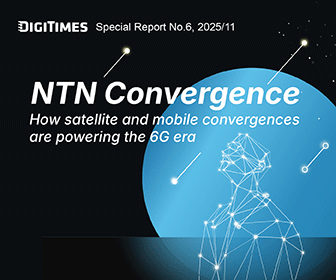Electric motorcycle manufacturer ECGO EVmoto introduced its lineup of e-motorcycles of three different sizes for bikers in Indonesia. Sales kicked off in February 2022, targeting ride-sharing contract bikers in need of large seats, long driving range, and high speed.
The largest ECGO 3 could reach 75km/hr and run 160km per day on two fully charged batteries, said William Teng, founder and CEO of the Singapore-headquartered e-bike company. He said the company has been improving its bikes, battery management software, and vehicle central control system since 2018. It later switched to battery charging and battery subscription from battery swapping.
Teng, who has been doing e-scooter and e-motorcycle manufacturing for nearly 20 years in China and Europe, said he has got connections with competitive manufacturers in China, and therefore the manufacturing costs of the ECGO bikes could be at least 15% lower than other e-motorcycles available in Indonesia.
Indonesia's subsidies for electric vehicles (EV)
The Industry Ministry of Indonesia recently revealed that it was planning to provide subsidies for electric two-wheeler purchase. Although the details are not clear yet, Teng said the estimated subsidy of US$400-500 per electric motorcycle is significant for bikers. And for the government, it helps lessen the burden of gasoline subsidies given to bikers every year.
Indonesia has been providing annual gas subsidies of around US$200 for each biker in the country, making up for the high costs of fuel.
According to Teng, ECGO motorcycles are likely to qualify for the subsidy as the bikes are already 30-40% manufactured in Indonesia, which is likely to exceed the government's requirement for subsidy. However, Teng projected a low requirement of local content rate (known as TKDN in Indonesian) by the government. He pointed out that the government might require not only localization of production, but also a minimum speed of 60 km/h and range of 70km of the bikes and IoT connectivity of the battery.
So far, ECGO is already doing chassis welding, assembly, and painting locally, so the company can make customized colors for customers.

Credit: ECGO EVmoto
"Indonesia has more than 140 million motorcycles right now but the supply chain for electric ones is still lacking," he said. "If the government puts too many restrictions on manufacturers, the industry will not have the room to grow. Let alone the government's target to convert two million gas-powered two-wheelers into electric ones."
He said the subsidy requirement may be 20% TKDN, i.e., about US$200 of a US$1000-bike should be generated locally in Indonesia.
From battery-swapping to home/destination charging
The new generation of ECGO bikes that were launched just a few months ago allow users to charge at home or at destination. Teng said the company has been expanding the aftermarket and customer service network and dealership across the country since the company was established in 2018. Back then, the company was initially building battery-swapping motorcycles and later opted for battery charging and subscription.
"We realized battery swapping would not work because the battery technology was improving very fast," Teng said. Every three to four years, there are new batteries with better performance. Electric two-wheelers have migrated from ternary battery to LFP battery; batteries are getting higher power, longer range, and a growing variety of chemical mixtures are used. Likewise, manufacturing costs are also getting lower.
Teng added that "retrofitting the swapping stations will cost so much" as motorcycles adopt solid-state battery in the future.
Other factors that swayed ECGO away from battery swapping include the capital-intensive nature of battery swapping. The initial capital investment required to set up a certain number of battery stations to satisfy early customers could incur high risks and cost the first-mover's advantage.
"But you need the first-mover advantage to succeed with battery swapping," he said.
With battery swapping, the battery design, battery size, and battery weight become limiting factors. That translates into constraints on power and range. What distinguishes ECGO 3 from other large e-motorcycles is that it runs on two batteries separately. In comparison, running on two batteries simultaneously could cause unsynchronized voltages and reduce range, Teng said.
Teng thinks battery charging allows manufacturers to create a large variety of products for different purposes. For ride-hailing contract bikers, large motorcycles suit their needs better.
Government subsidy stimulates demand
Demand for EVs is expected to grow as the government introduces subsidies. For the coming year, ECGO EVmoto's sales goal reaches 80,000-100,000 units; for 2024, Teng said estimated sales could reach 300,000 units; for 2025, the sales target will be one million units.
Two-wheeler ride-sharing is a huge market in Indonesia. Teng said the costs of gas are surging so fast that more and more commercial contract bikers are switching to electric motorcycles.
ECGO bike is recently running a trade-in campaign for bikers who want to switch from gas-powered motorcycle to electric ones with a US$150 discount.




